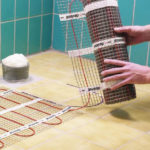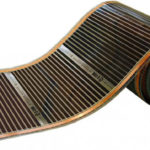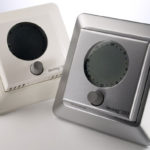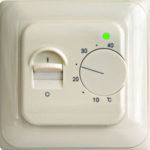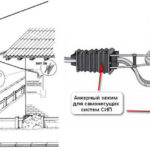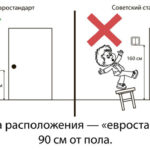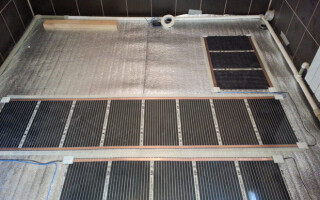Laying an infrared underfloor heating under tiles in residential or utility rooms, you can solve the problem of heating not only in an apartment or house. Thin film elements allow you to install the system without lifting the floor and pouring a concrete screed.
Contents
Can I install a film floor under a tile?
When buying thin heating elements, the following questions often arise:
- which film-IR to install;
- laying infrared underfloor heating under tile seems unrealistic or too difficult.
Builders use two easy and quick installation methods:
- dry, using GFB or Glass Magnesite Sheeting (SML);
- Wet, i.e. thin concrete screed.
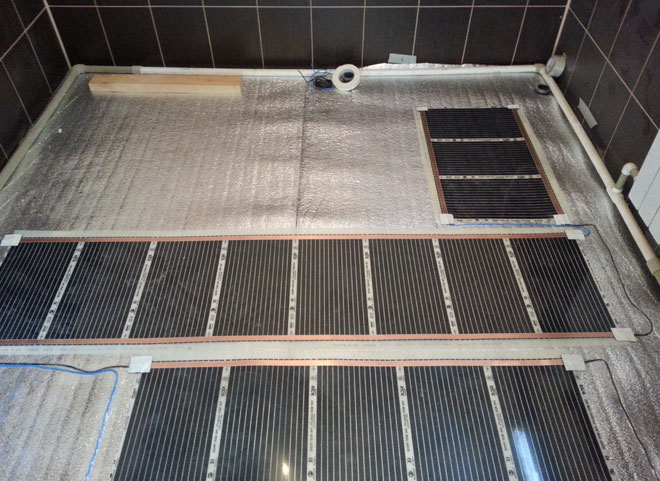
To install infrared underfloor heating under porcelain tiles or tiles, you should choose a floor with carbon elements. The details of the finish will not be able to damage the thin carbon strips, because the film will be covered. It is possible to install foil floor heating under tiles even in rooms with high humidity, but it is still more correct to use resistive cable for tiles.
Necessary materials
Before the work, you need to prepare the following materials:
- thermal insulating substrate (technical cork, EPPS, isolon or others);
- depending on the method of installation - self-leveling filler or moisture-resistant GVL/ML;
- liquid nails or dowels;
- duct tape and bitumen tape;
- plastic film;
- plastic reinforcing mesh;
- Under-tile foil floor and its accessories (clips, wires, etc.);
- temperature controller;
- tile adhesive and ceramic, depending on the choice of finish;
- multimeter or a screwdriver probe;
- pliers, a drill with attachments, scissors, and a tape measure.
Installation Stages
Calculation of the cost of heating is carried out together with the drawing up of the installation plan. Heaters are placed only on the area free of furniture, so the plan requires marking its location, and from the free walls to indent 5-7 cm. The remaining space is divided into strips equal to the width of the heaters and calculate the required number in meters.
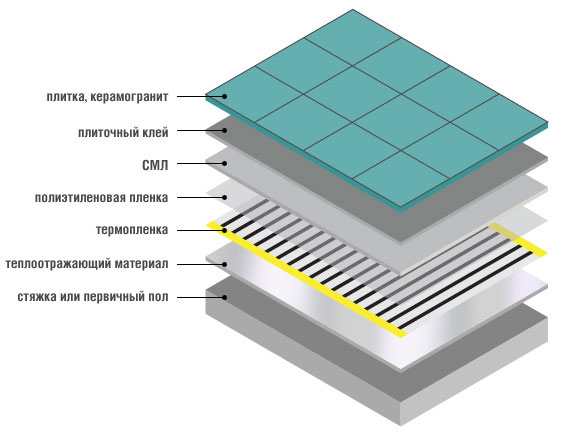
Install infrared underfloor heating under the tiles has to be done in several steps:
- prepare the base for the infrared heaters;
- Install the heating system;
- Connect and test it;
- lay the tile base and glue the material.
Preparing
The substrate must be cleaned of debris and potholes must be sealed. Installation technology of infrared floor heating provides for the laying of insulation of heat-saving materials. For this purpose, coatings with low shrinkage and without a foil layer are used (cork, EPPS, etc.). They can be attached to the substrate with liquid nails, and to the concrete with dowels and self-tapping screws. It is desirable to lay thermal insulation over the entire area of the room. On the floor, make a marking according to the plan, indicating the boundaries of the installation of elements and strips of material.
Installing the thermal film
Before laying the infrared floor heating film, the roll material should be cut into strips according to the markings. Cut the material only in the specially marked places where the scissors are shown. Tapes of infrared heaters should not overlap each other, leave a gap of 5-7 mm between the strips of the film floor. You can fix the tape to the floor with liquid nails.
Connecting

Assemble the infrared underfloor heating system in the following sequence:
- Install the terminal clamps at the exit points of the copper bars, press them with pliers.
- Determine where to mount the thermostat on the wall.
- Cut the installation wires long enough to connect the floor heating to the network.
- Insert the wires into the terminals and crimp them with pliers or a special tool to connect the wires to the terminals. Connect the adjacent tapes in parallel.
- Tape the joints and the edges around the perimeter with tape, insulate the terminals and the edges of the busbars with bitumen tape.
- Place the temperature sensor under the foil. Lead the wires from the film strips to the place where they are plugged in and install them. Check the functionality of the system with a tester, determining that there is no break in the circuit on each strip, and then on the entire system.
Installing the subfloor
Depending on the choice of dry or wet method, prepare the materials: mix a self-levelling compound with water or cut GFB. For moisture isolation, cover the installed TP system with polyethylene, leaving an allowance of at least 5 cm at the edges. Carefully tape the perimeter. Depending on the peculiarities of laying a film floor under the tiles on the concrete base proceed as follows:
- Dry method. Cover the entire area of the room with cut GFB or LSB plates. Fasten the elements with liquid nails or self-tapping screws with dowels. Thread fasteners must be screwed in carefully, in the gaps between the TP strips or in the places designed for cutting parts. Do not drive the screw into the tire or carbon strips. If necessary, roughing is performed in 2 layers, overlapping the seams of the lower level.
- Wet method. On top of the damp insulation to place a reinforcing plastic mesh (do not use metal). Its edges should go beyond the perimeter of the TP and PE for 20 cm, the grid is fixed with screws. Pour the base and the film IR system with self-leveling composition. The thickness of the layer is 8-10 mm. The coating must cure within 24 hours.
Tile laying
Before laying the ceramic coating, the surface of the base must be treated with concrete contact in 2 layers. Install insulation around the perimeter of the wall to create a thermal joint. Prepare the tile composition. Apply the adhesive with a toothed trowel, in separate areas that can be filled with tiles in 30 minutes.
Align the ceramic elements by pressing them into the adhesive. Allow the adhesive to set and fill the joints with grout, pressing it into the gaps with a rubber trowel. Remove the remains of the composition with a wet cloth, without allowing them to dry. After laying, care for ceramics should follow the general rules.
Related articles:
